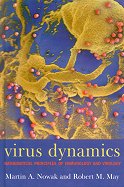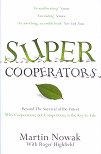In this accessible and well-written text, Martin Nowak and Robert May describe the emerging field of theoretical immunology. Using mathematical and computational models, the authors explore how populations of viruses and immune cells interact in various circumstances, and how infectious diseases spread within patients.
Virus dynamics is structured around the examples of HIV/AIDS and Hepatitis B virus, although the approaches described are more widely applicable. The authors use mathematical tools to uncover the detailed dynamics of viral infection and the effects of antiviral therapy. Models are developed to describe the emergence of drug resistance, and the dynamics of immune responses, viral evolution, and mutation. The practical implications of this work for optimization of the design of therapy and vaccines are discussed. The book concludes with future prospects of this fascinating and highly useful field of study.


